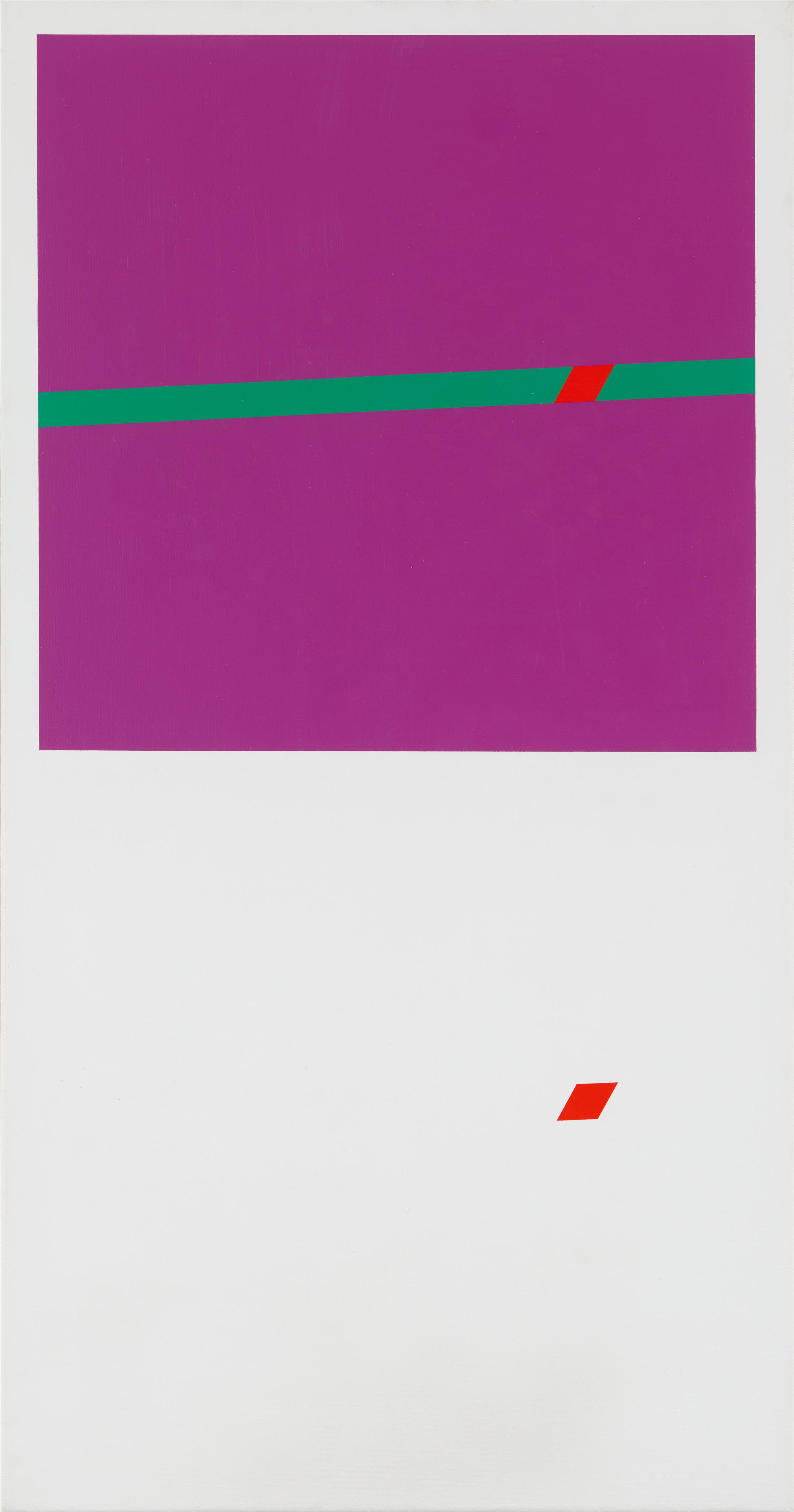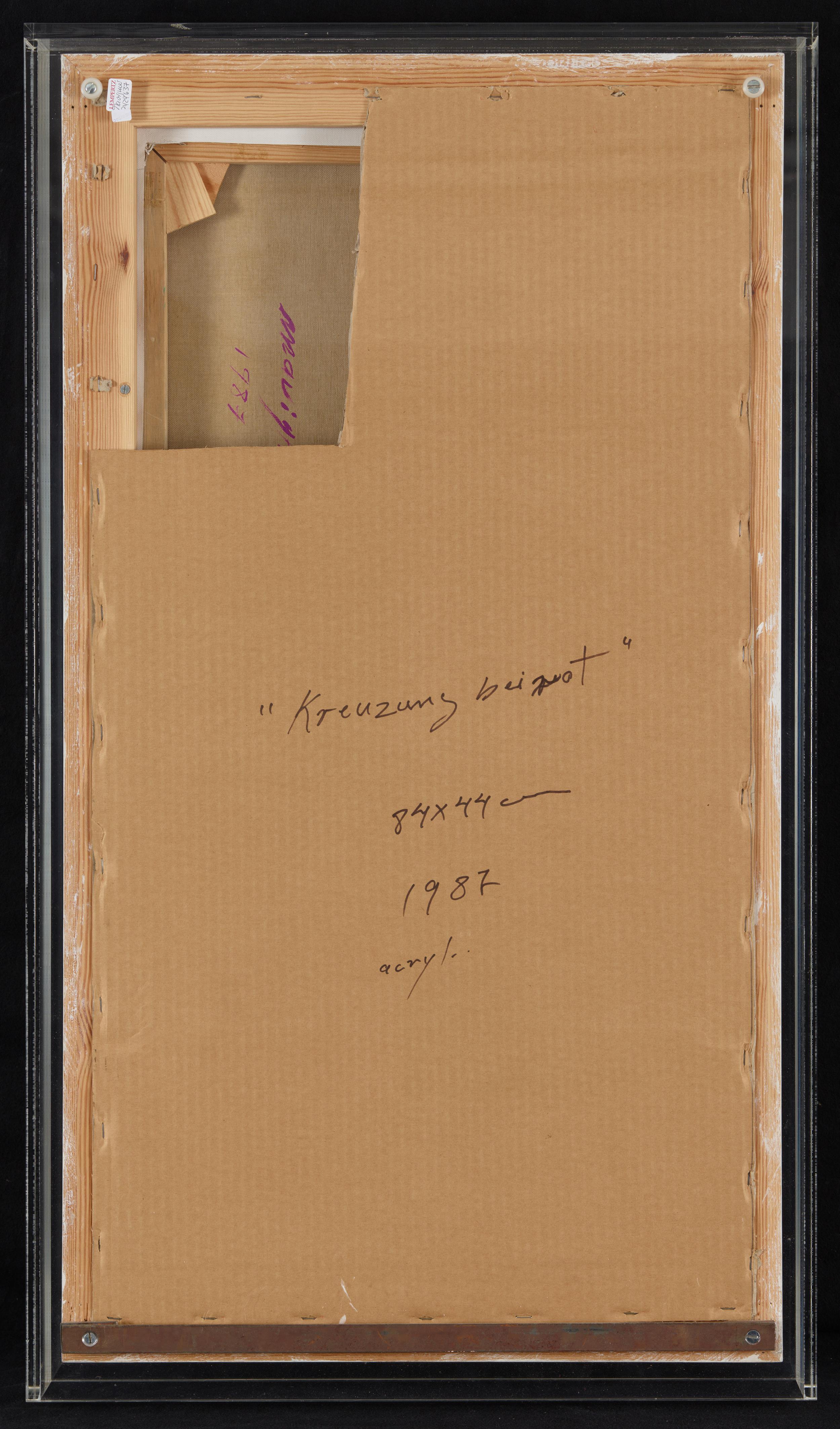Almir da Silva Mavignier
Kreuzung bei Rot
1987
Acrylic on canvas. 84 x 44 cm. Framed under Plexiglass. Signed and dated 'mavignier 1987' verso on canvas and titled 'Kreuzung bei Rot' on stretcher. Dated and titled 'Kreuzung bei rot 1987' on powder card and with information on material and dimensions.
Almir Mavignier is best known for his dot grid paintings, composed of uniform, embossed dots of colour, produced from the mid-1950s to the mid-1980s. These grids provide an optical mixture of colours to form colour progressions and incorporate light and shadow into the picture effect.
In 1951, the artist moved from his native Brazil to Europe; first, he studied in Paris and from 1953 onwards at the Ulm School of Design in Germany. The works by Piet Mondrian and his teachers in Ulm, Max Bill and Josef Albers, influenced his work at this time. He worked with clearly separated geometric shapes; diagonals and triangular shapes predominated.
In his later work, the artist returned to these early constructivist-concrete compositions. In “Kreuzung bei Rot” from 1987, he divided the picture plane into two halves – similar to the painting “Violett-grün Kreuzungen” from the same year of origin offered at Lempertz in 2016. In the one half, a green line cuts though the purple background and is crossed diagonally at one point by a red line of the same width. This line appears to be running underneath the purple surface and is only visible at the crossing point in the form of a small red rhombus. The same rhombus shape can be found isolated in the white background of the lower half of the painting; of the lines that probably also cross here, only the rhombus shape can be recognised as the crossing point. The artist leaves the underlying construction principle unclear and cleverly plays with the viewer’s visual expectations.
Provenance
Collection Carl Vogel, Hamburg; Galerie Renate Kammer, Hamburg; private collection, North Rhine-Westphalia




